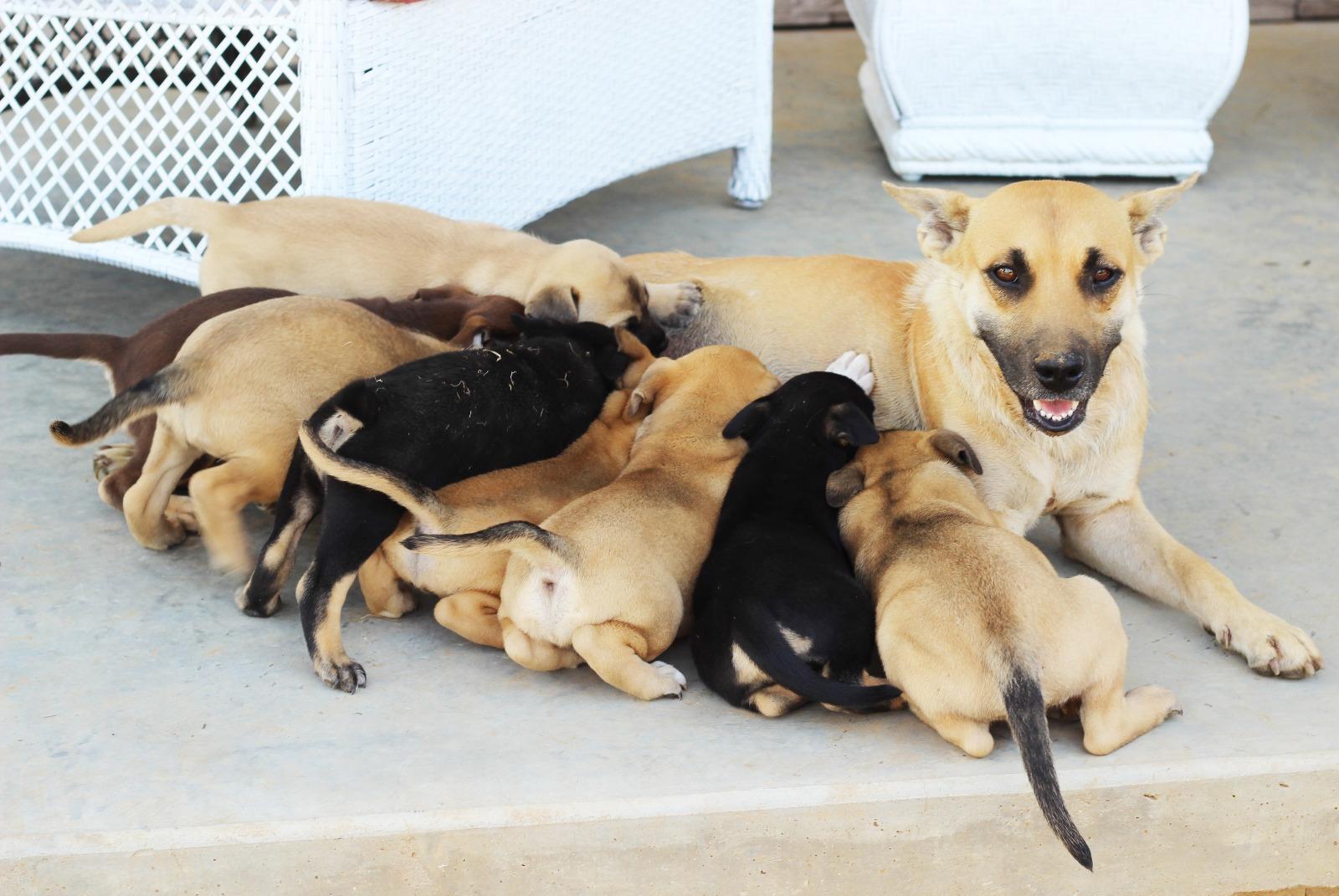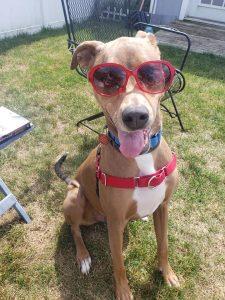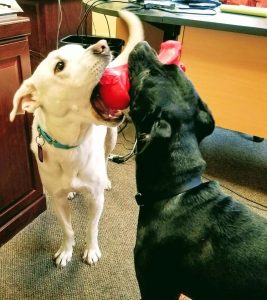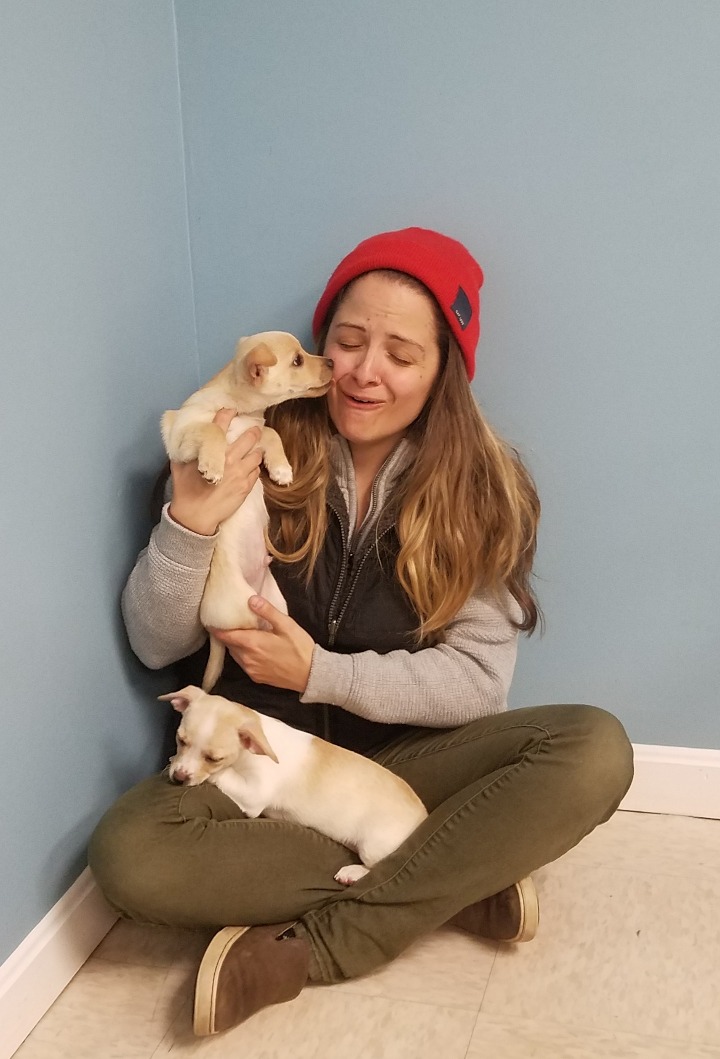The Foster Process
So you’d like to help us save dogs?
We’ll be honest…fostering is WAY harder than adopting, but if you are up for the challenge, we are ready to bring you aboard!
Here’s what you can expect from the SOSARL foster home onboarding process works (click on each step to expand):

Are you considering adoption???
Our foster onboarding process is very different (and much more extensive) than our adoption approval process. If your intent is to adopt, even if you think you may want to try a trial adoption (“foster-to-adopt”), please start by completing our online adoption application.
Step 0: Thinking about getting involved?
 Please consider joining us at our next scheduled New Volunteer Orientation (the second Tuesday of every month at our store in Wakefield, RI) or adoption event to learn more about us. You can see all of our events HERE. No application is needed to attend!
Please consider joining us at our next scheduled New Volunteer Orientation (the second Tuesday of every month at our store in Wakefield, RI) or adoption event to learn more about us. You can see all of our events HERE. No application is needed to attend!
Step 1: Complete Our Application.
 If you have done your homework and believe fostering with SOSARL is a good match for you at this time in your life, start by completing our online application. We ask lots of questions so as to help get a feel for your lifestyle, household, and expectations, all in the effort to help set you up for a successful fostering experience.
If you have done your homework and believe fostering with SOSARL is a good match for you at this time in your life, start by completing our online application. We ask lots of questions so as to help get a feel for your lifestyle, household, and expectations, all in the effort to help set you up for a successful fostering experience.
Step 2: Review Application & Acknowledge.
 Within 48 hours of receiving your application, we will reach out to you through email to confirm receipt of your application, as well as to share a few preliminary resources with you, including:
Within 48 hours of receiving your application, we will reach out to you through email to confirm receipt of your application, as well as to share a few preliminary resources with you, including:
- An Overview of the SOSARL Rescue Process/Flow
- SOSARL Foster Home Handbook
- SOSARL Foster Key Do’s and Don’ts
In this email, we will also suggest a few days/times to connect to start the conversation (see Step 4 below).
Step 3: Reference Checks, as applicable.
 As soon as possible after receiving your application, possibly even before Step 2, our volunteer team will reach out to your landlord, vet and personal references, as relevant. Please ensure that you have given each of your references a heads up about your intentions to foster and that they have permission to speak with us. If you have not given permission to your references to speak with us, or we cannot get all of our questions answered, our volunteer may reach out to you for your help.
As soon as possible after receiving your application, possibly even before Step 2, our volunteer team will reach out to your landlord, vet and personal references, as relevant. Please ensure that you have given each of your references a heads up about your intentions to foster and that they have permission to speak with us. If you have not given permission to your references to speak with us, or we cannot get all of our questions answered, our volunteer may reach out to you for your help.
Step 4: Let’s Talk!
 This is our favorite part of the onboarding process, because this is where we get to learn about you, your life and your family, and why you are interested in fostering…and we get to tell you about OURSELVES! ☺ This conversation may be done in one long sitting over Zoom, or split across several sessions (eg, a phone call, Zoom session, in-person home visit), depending upon several variables, including our volunteers’ availability and your readiness to foster.
This is our favorite part of the onboarding process, because this is where we get to learn about you, your life and your family, and why you are interested in fostering…and we get to tell you about OURSELVES! ☺ This conversation may be done in one long sitting over Zoom, or split across several sessions (eg, a phone call, Zoom session, in-person home visit), depending upon several variables, including our volunteers’ availability and your readiness to foster.
>During this step we have A LOT of information to cover. We will start with reviewing the basic responsibilities of fostering so you can feel confident that fostering with SOSARL is right for you at this time. [And if you decide it is not, no worries! There are PLENTY of ways to help us help dogs that do not involve bringing a new dog into your home!!!] We will discuss your availability for fostering, which may dictate how quickly we will strive to complete the onboarding process (the fresher the information when you get your first foster dog, the better!). We will also want to be sure that you have enough time to review all the critical resources that we have to share with you, and answer any immediate questions you may have.
Since EVERYONE in the household needs to be onboard with fostering, we will want to meet everyone in the household (either in person or virtually), including your resident pets! This will also be a great opportunity for all family members to ask any questions and share any concerns that they may have. We will also request a virtual (via Zoom) or in-person (via a home visit) tour of your home/property to learn about your plans (and provide any helpful suggestions) for how best to incorporate your foster dog into your household and routine.
An in-person home visit is not always required, but can sometimes be very helpful, even for those households that have fostered or cared for a dog before. The home visit offers yet another opportunity to ask questions, address concerns, further explore complicated situations (eg, lots of individuals, other pets, etc) and build our relationship. We will be, after all, in this together!
Resources that will be shared during this step include copies of our Code of Conduct and contracts, as well as a link to our introductory video to dog behavior and training.
Step 5: Knowledge Reinforcement (aka, take a quiz)
 After the above steps are completed, we will email you a link to our Foster Home Quiz. We have created this quick online quiz to reinforce some of the many details we have shared with you during this process. Don’t worry – it’s open book!
After the above steps are completed, we will email you a link to our Foster Home Quiz. We have created this quick online quiz to reinforce some of the many details we have shared with you during this process. Don’t worry – it’s open book!
Step 6: Finalization
 At this point we will collect the completed foster and volunteer contracts from you, and update you in our system to be an official foster home!
At this point we will collect the completed foster and volunteer contracts from you, and update you in our system to be an official foster home!
Step 7: Welcome
 Upon successfully completing the above steps, we will welcome you to the SOSARL Foster Team! We will send you an email with directions for how to join our private Facebook Groups, how to access our internal online Volunteer Resources Center, and introduce you to our other members! We will also start to suggest possible foster dog matches!
Upon successfully completing the above steps, we will welcome you to the SOSARL Foster Team! We will send you an email with directions for how to join our private Facebook Groups, how to access our internal online Volunteer Resources Center, and introduce you to our other members! We will also start to suggest possible foster dog matches!
Step 8: Get Your First Foster Dog!
 Over the next few days/weeks, we will work together to identify a good first foster dog for you. Depending upon the specifics of your home and our needs, this may take a few weeks, or we may have a dog who needs you right away! The Foster Coordination Team will be with you every step of the way with your first few fosters. As you gain experience, you will become more comfortable, but there will always be more to learn, and our team is committed to providing you with all the best resources to help you succeed.
Over the next few days/weeks, we will work together to identify a good first foster dog for you. Depending upon the specifics of your home and our needs, this may take a few weeks, or we may have a dog who needs you right away! The Foster Coordination Team will be with you every step of the way with your first few fosters. As you gain experience, you will become more comfortable, but there will always be more to learn, and our team is committed to providing you with all the best resources to help you succeed.

Thank you for wanting to foster!
Preparing Your Pet
The first thing you need to do when considering foster care is to protect your personal animals. Animals can come to us from unknown origins, sometimes with underlying medical issues and conditions, so it is important that you protect your family pets as much as you can. If you choose to foster puppies, you may be exposing your own pets to upper respiratory infections and worms or parasites.
Before bringing home your first foster animal, make sure your animals are up to date with their vaccinations. Talk to your veterinarian about fostering and follow their recommendations about any precautions you need to take. The veterinarian may suggest additional vaccinations/immunizations to protect your animal.
Preparing Your Home
Dogs are curious creatures. Some are capable of jumping onto high surfaces or squeezing into the smallest of spaces. To protect foster animals in a new environment and to safeguard your belongings, it is necessary to animal-proof your entire house. NEVER underestimate your foster animal’s abilities. Accidents happen!
Once you have chosen an area where you will care for your foster guests, you should “pet-proof” the area. Pay attention to any small or dangerous objects, such as pins, needles, paper clips, nails, staples, thread, string, rubber bands, caustic/toxic chemicals, moth balls, plants and any other items that are potentially dangerous. Animals are also attracted to electrical cords, TV cords, telephone cords and curtains. These items should all be blocked so they can’t get at them. A good rule of thumb is “if you don’t want to lose it, put it away”. Also, to ensure nothing is missed, get down at an animal’s eye-level. Look closely for any small holes or dangerous items that may have been missed at your first pass of pet-proofing.
Kitchen/Bathroom
Kitchens/Bathrooms/Utility Rooms
- Use childproof latches to keep little paws from prying open cabinets.
- Keep medications, cleaners, chemicals and laundry supplies on high shelves or in childproofed cabinets.
- Keep trash cans covered or inside a latched cabinet.
- Check for and block any small spaces, nooks or holes inside cabinetry, furniture, floors, appliances, etc. where your foster pets may hide. Also make certain that spaces behind washer/dryer units are closed off so your foster animals can’t get in there either.
- ALWAYS keep your dryer and washer units closed!!! Make sure your fosters haven’t jumped into the dryer or washer before you turn it on! (Yes, this does happen.)
- Keep all foods out of reach and/or in cabinets. Even if the food isn’t harmful to the dog, the wrapper could be.
- KEEP TOILET LIDS CLOSED to prevent drowning. Curious puppies and kittens can easily fall in and drown.
Living/Family Room
Living/Family Room
- Place dangling wires from lamps, DVD players, TVs, stereos and phones out of reach. You can place the cords through PVC pipes or other protectors available at any office supply store to prevent the pets chewing on them.
- Keep children’s toys put away.
- Put away knickknacks that are valuable to you or understand that the foster pets can easily knock things over.
- Block any spaces where your vacuum can’t fit but a foster pet could.
- Remove dangerous items like strings, pins, yarn, etc.
- Move houseplants–many of which can be poisonous–out of reach. This includes hanging plants that can be jumped onto from other nearby surfaces.
- Put away all sewing and craft supplies–especially thread and yarn. If ingested, these items can obstruct cat or puppies’ bowels, sometimes requiring extensive surgery to reverse.
- Secure aquariums and cages that house small animals, such as hamsters or fish, to keep them safe from curious paws.
Garage/Basement
Most garages contain too many dangerous chemicals and unsafe items to be an acceptable foster site.
Additionally, the environment is pretty harsh in a garage; garages are usually not temperature-controlled, so the heat of summer or the freezing cold of winter makes for a miserable living situation in there, if not a fatal one.
- Move all chemicals to high shelves or behind secure doors.
- Clean up all antifreeze from the floor and driveway – One taste can be lethal to an animal!
- If you think your dog escaped into the garage, double- and triple-check underneath your cars for them, including in the wheel wells. A scared dog, especially a small one, will find the strangest (and most dangerous) places to hide!
Other Hazards
Here are some other things to consider that might be an afterthought now, but are things that you should be vigilant about.
- Closet and bedroom doors
- Open doors to the outside
- Open washer/dryer doors
- Open cabinet doors
- Computer wires
- Folding chairs
- Potted plants
Keeping Your Foster Home Clean
- Whichever room you choose to make your foster animal’s new home, make sure that it is easily cleaned.
- You should be able to disinfect it between foster groups.
- Carpet and other soft surfaces can harbor disease hosts from group to group.
- It is also difficult to clean up accidents on carpet, especially when they seep into the carpet pad.
- Bathrooms and other areas with tile, hardwood or other impermeable surfaces are ideal places to house your foster animals
Preparing your yard
A fenced-in yard is the ideal situation for your foster dog.
Here are some Do’s and Don’ts for your foster in the yard.
- Check that there are no holes in your fence or yard where your dog can escape – some dogs LOVE digging holes!
- Check that your fence (if you have one) is tall enough – you’d be amazed how high some dogs can jump, even little ones!
- Keep your foster dog on a leash for the first few trips outside.
- Allow your foster dog some time to explore the new environment.
- Leave a foster dog unattended or unwatched outside.
- Let your foster dog (especially a small one) outside at night without close supervision – coyotes and some birds of prey can easily pick off a small dog.
- Never, ever make your yard, or the outside in general, your foster dog’s primary living/sleeping space.
We think you’ll agree that these are pretty common-sense rules. If you ever have any questions, check out our Resources page on this site (linked here).
We can’t thank you enough for considering fostering for us! It’s extremely rewarding and it helps us to save more lives.
